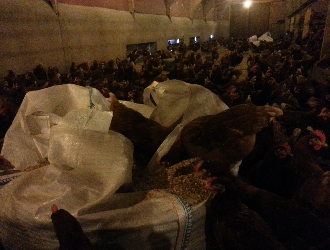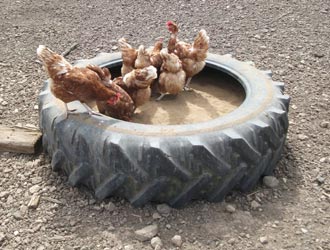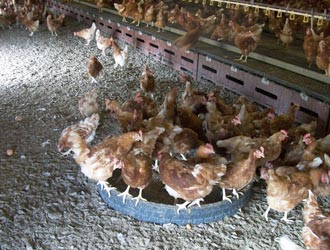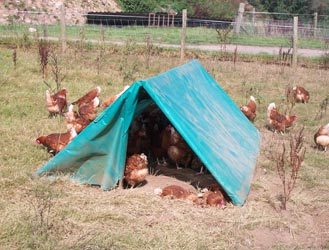Dust baths
Hens have a natural need to dust bathe and will seek areas that have a dry and loose substrate to dust bathe in. If the litter is kept dry and friable throughout rear and lay this should be enough to satisfy this behaviour. If the litter becomes compact and wet, the hens may become frustrated and stressed which could trigger injurious pecking. Providing discrete dust baths can help to alleviate this stress while poor litter problems are resolved.
 |
|
 |
|
Bulk bags filled with litter material can make effective dust baths. The hens will also spread the litter around the shed saving you the task. This particular producer has had no issues regarding eggs being laid in the bags.
|
Old tyres can make great dustbaths when filled with sand. These can be used inside and outsite the house.
|
 |
 |
|
It is best practice to use dustbaths after the hens have learnt to lay their eggs in the nest boxes. This should prevent the hens using them to lay in. Additionally, by using a 50:50 mix of red mite powder and straw in the dust baths they can also help control red mite.
|
Artificial shelters on the range can provide good conditions for the hens to naturally create dust bathing areas. This can help to encourage more hens to utilise the range area.
|